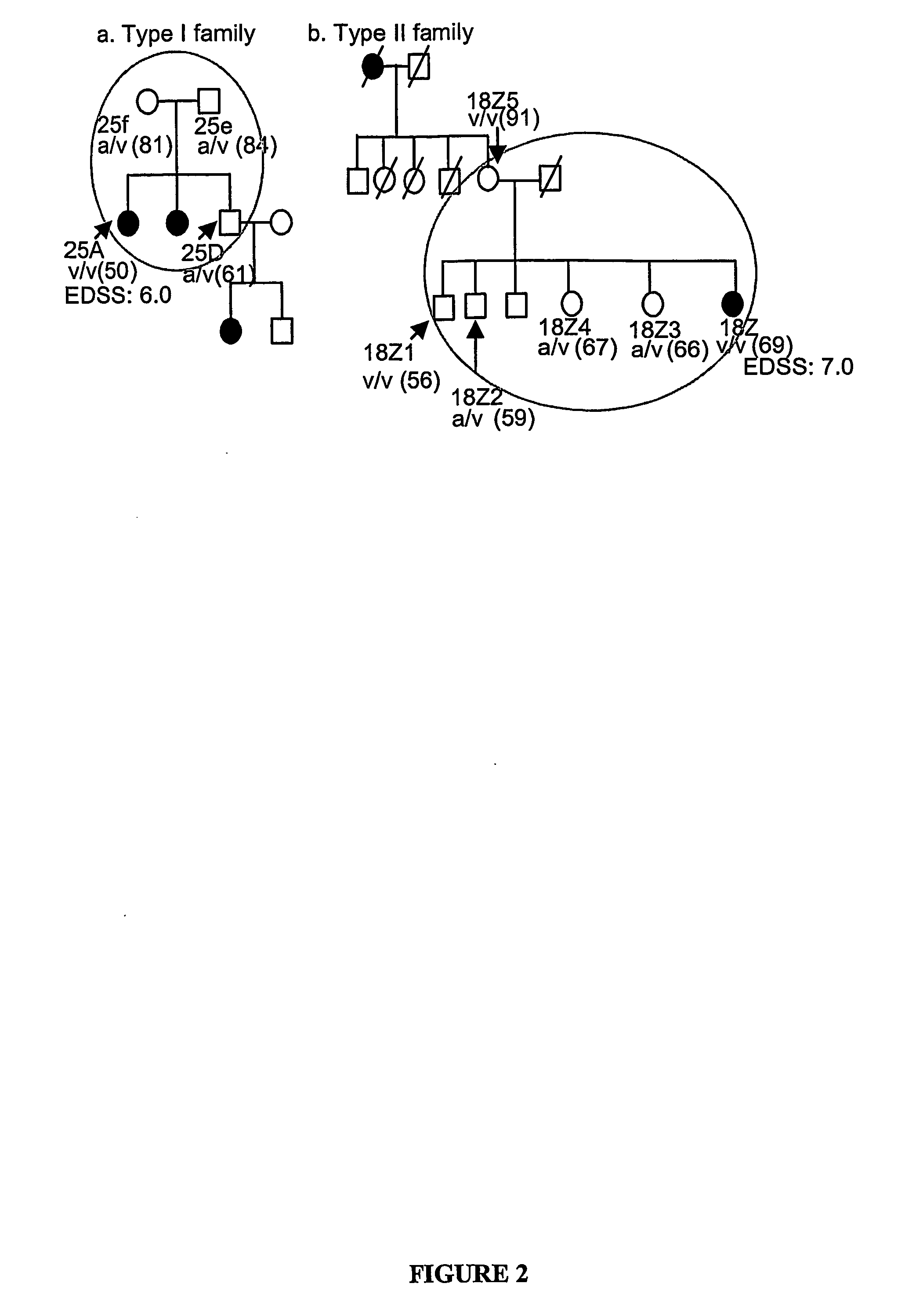Polymorphic Cd24 Genotypes that are Predictive of Multiple Sclerosis Risk and Progression
- Summary
- Abstract
- Description
- Claims
- Application Information
AI Technical Summary
Benefits of technology
Problems solved by technology
Method used
Image
Examples
example 1
PCR Amplification and RFLP Analysis of CD24 Gene
[0082]Collection of Samples
[0083]All sample collection and experimentation have been approved by the Institutional Review Board (IRB), and informed consents from all participants were obtained prior to sample collection. Patients with definite MS, as diagnosed by KR at the Ohio State University MS Center according to the McDonald criteria (25), were offered the opportunity to participate. Consenting family members with or without MS provided blood samples as well. When family members were in other sites, samples were obtained by a local physician or nurse and transported or mailed to our center. Ascertainment of presence or absence of MS amongst the relatives was by history only, and relatives who provided blood samples were not subject to neurological evaluation or Magnetic Resonance Imaging (MRI) at our center. Of the 498 samples that yielded valid genotyping information, 242 were from MS patients and 256 were from the non-MS relativ...
example 2
Molecular Cloning and Expression of CD24a and CD24v cDNA
[0088]The CD24 cDNA was amplified from PBL or CD24v / v and CD24a / a individuals by RT-PCR. The primers used were: Forward (CD24F.H3): ggccaagcttatgggcagagcaatggtg; and reverse (CD24R.Xhol): atccctcgagttaagagtagagatgcag. The PCR products (256 bp) were digested with HindIII / Xhol and then cloned into pCDNA3 expression vector at HindIII / Xhol site, thus generating plasmid pCDNA3-CD24A and pCDNA3-CD24V. The sequence of CD24 cDNA inserts was confirmed by DNA sequencing. To test the expression efficiency of the two CD24 alleles, we transfected varying concentrations of the plasmids into the CHO cells using the fugene 6, as described (27). Three days after transfection, the cell surface expression of the CD24 was determined by flow cytometry, using saturating amounts of anti-CD24 antibodies.
example 3
Evaluation of CD24a and CD24v Expression Using Flow Cytometry
[0089]Expression of human and mouse CD24 was determined by flow cytometry using fluorochrome-labeled anti-human (B-D Pharmingen, San Diego, Calif.). PBL were isolated from fresh blood samples and stained with saturating amounts of anti-CD24 antibodies in conjunction with anti-CD3 antibodies to mark the T cells among the PBL.
PUM
 Login to View More
Login to View More Abstract
Description
Claims
Application Information
 Login to View More
Login to View More - R&D
- Intellectual Property
- Life Sciences
- Materials
- Tech Scout
- Unparalleled Data Quality
- Higher Quality Content
- 60% Fewer Hallucinations
Browse by: Latest US Patents, China's latest patents, Technical Efficacy Thesaurus, Application Domain, Technology Topic, Popular Technical Reports.
© 2025 PatSnap. All rights reserved.Legal|Privacy policy|Modern Slavery Act Transparency Statement|Sitemap|About US| Contact US: help@patsnap.com



